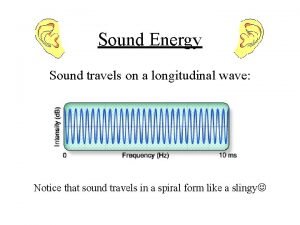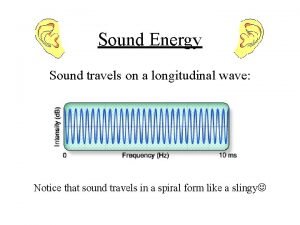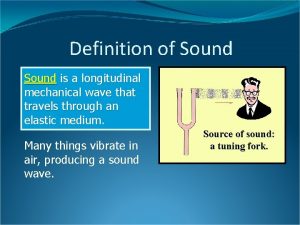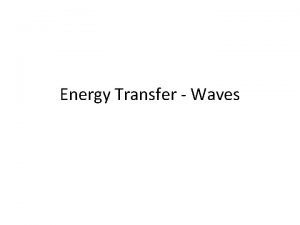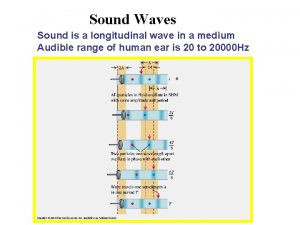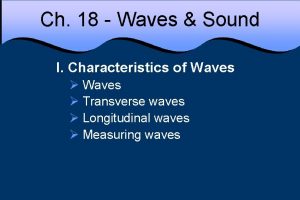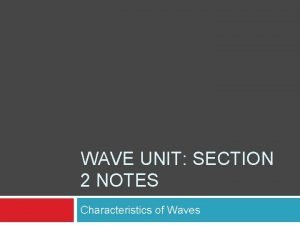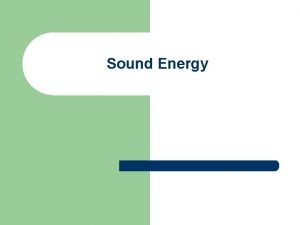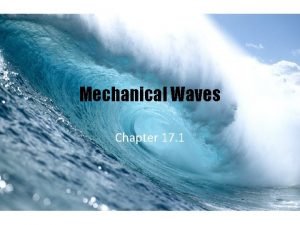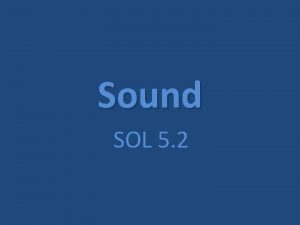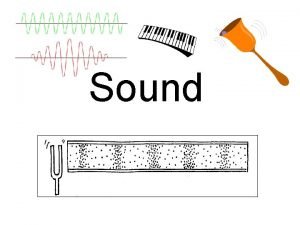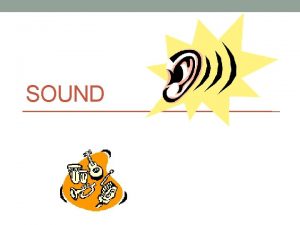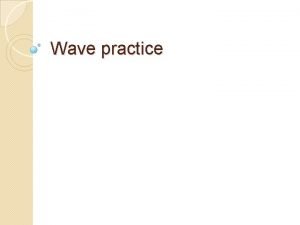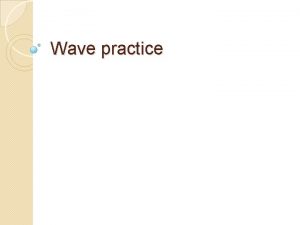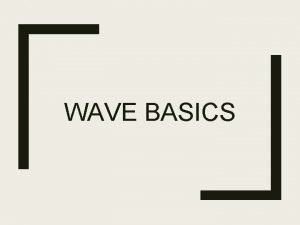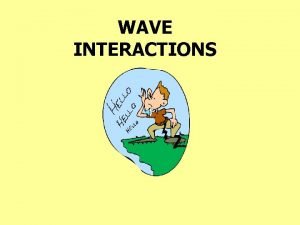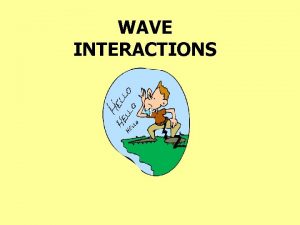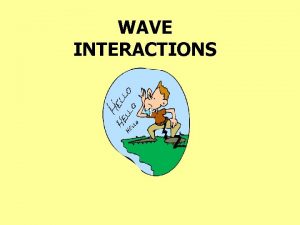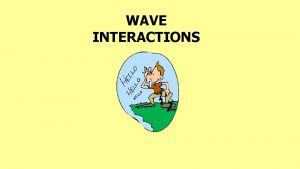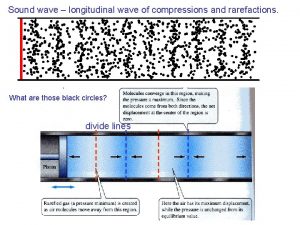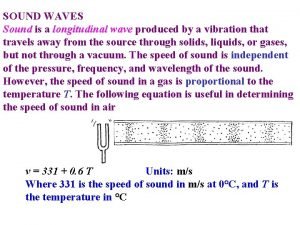Sound Energy Sound travels on a longitudinal wave






















- Slides: 22

Sound Energy Sound travels on a longitudinal wave: Notice that sound travels in a spiral form like a slingy

Imagine what happens when you drop a stone into a pool of water. Waves ripple out from the spot where the stone entered the water. The way waves move across the water is similar to how sound waves travel through the air.

When you speak or shout, your vocal chords vibrate. These vibrations travel in all directions through the air as waves. When the waves reach our ears, they make our eardrums vibrate too, so we can hear the words.

Sound waves travel on a MEDIUM: Any SOLID, LIQUID OR GAS Sound travels by pushing the particles of a substance. The particles push into the particles next to them, and then return to their original position. And the sound continues to travel in this form until it reaches your ear!

Which state of substance would sound travel through faster? WHY?

All right, let’s practice what we’ve learned so far… It’s time to let your partner ear it!! Plus, domino affect

Mediums: • Sound travels through a solid faster, than through a liquid, which is faster, than through a gas. – Our ears are custom to hear sound through a gas…

In movies and on TV, you'll sometimes see and hear things exploding in outer space -- alien spacecraft and things like that. Is that really possible knowing what we know about sound?

Compressions and Rarefractions: Compressions: area of sound waves where molecules are closer together (E) Rarefraction: area of sound where molecules are further apart (B)

Wavelength: distance from end of compression to the end of the next compression (A) Air molecule Rarefaction (decreased air density) Stereo Speaker Compression (increased air density) wavelength

Frequency: the number of waves produced per second (C)

Two other properties that affect sound energy: 1. Pitch 2. Intensity

PITCH Pitch is the rate at which the vibrations are produced. The higher the frequency, the higher the pitch. Which picture above would have the lowest pitch? Highest pitch?

The more waves per second (or the higher the frequency), the higher the pitch!

Intensity depends on the strength, or amplitude, of the vibrations producing the sound. If a piano string is struck forcefully the string swings back and forth in a wider arc. The stronger vibration then produces a louder tone since stronger vibrations compress the molecules of the air more forcefully and gives them greater energy, which is interpreted by our ears as a louder sound.

So in conclusion: Sound energy travels on a __________ wave. Sound travels through a ______. Sound travels better through a _______ medium, than a _______ medium. A sound wave is made up of two parts; compressions and rarefractions. The ________ represent areas where the molecules are closer together. Where as, a __________ is where the molecules are further apart. The distance from the end of one compression to the beginning of the next compression is called the ___________. The more waves per second the ______ the frequency. The greater the frequency the _____ the pitch. The more force put into the pulse (which starts the sound) the greater the _________ of the sound. Therefore, the sound will be louder.

1. A teacher attaches a slinky to the wall and begins introducing pulses with different amplitudes. Which of the two pulses (A or B) below will travel from the hand to the wall in the least amount of time? Justify your answer. They reach the wall at the same time

2. The teacher then begins introducing pulses with a different wavelength. Which of the two pulses (C or D) will travel from the hand to the wall in the least amount of time ? Justify your answer. They reach the wall at the same time.

3. Doubling the frequency of a wave source doubles the speed of the waves. TRUE or FALSE: FALSE! The speed of a wave is unaffected by changes in the frequency. It is affected by the medium!

3. Two waves are traveling through the same container of nitrogen gas. Wave A has a wavelength of 1. 5 m. Wave B has a wavelength of 4. 5 m. The speed of wave B must be ____ the speed of wave A. a. one-ninth b. one-third c. the same as d. three times larger than Answer: C

4. Why do we hear this when a jet flies past us? • The closer the jet is to our ears, the closer the wavelengths. Therefore, we hear a higher pitch when the jet is closer, and a lower pitch as it moves further away. Also, the closer the jet the more intensity; therefore it seems louder to our ears.

5. Label the three pictures below with the following: a. highest pitch (HP) b. middle pitch (MP) c. lowest pitch (LP) LP MP HP
 Sound energy travels on a wave
Sound energy travels on a wave Sound is a longitudinal wave
Sound is a longitudinal wave Sound waves are electromagnetic waves. true false
Sound waves are electromagnetic waves. true false Example of longitudinal wave
Example of longitudinal wave Transverse wave and longitudinal wave example
Transverse wave and longitudinal wave example Sound waves longitudinal waves
Sound waves longitudinal waves Mechanical wave definition
Mechanical wave definition Waves energy transfer
Waves energy transfer Draw and label transverse wave
Draw and label transverse wave Whats a longitudinal wave
Whats a longitudinal wave The wave chapter 13
The wave chapter 13 What waves don't require a medium
What waves don't require a medium What waves do not require a medium
What waves do not require a medium What is a repeating disturbance
What is a repeating disturbance Wave unit
Wave unit Longitudinal wave
Longitudinal wave What is sound energy
What is sound energy Which travels along a surface separating two media
Which travels along a surface separating two media Wave speed formula
Wave speed formula Sound is
Sound is Sound sol
Sound sol Sound travels fastest through
Sound travels fastest through What can sound travel through
What can sound travel through
